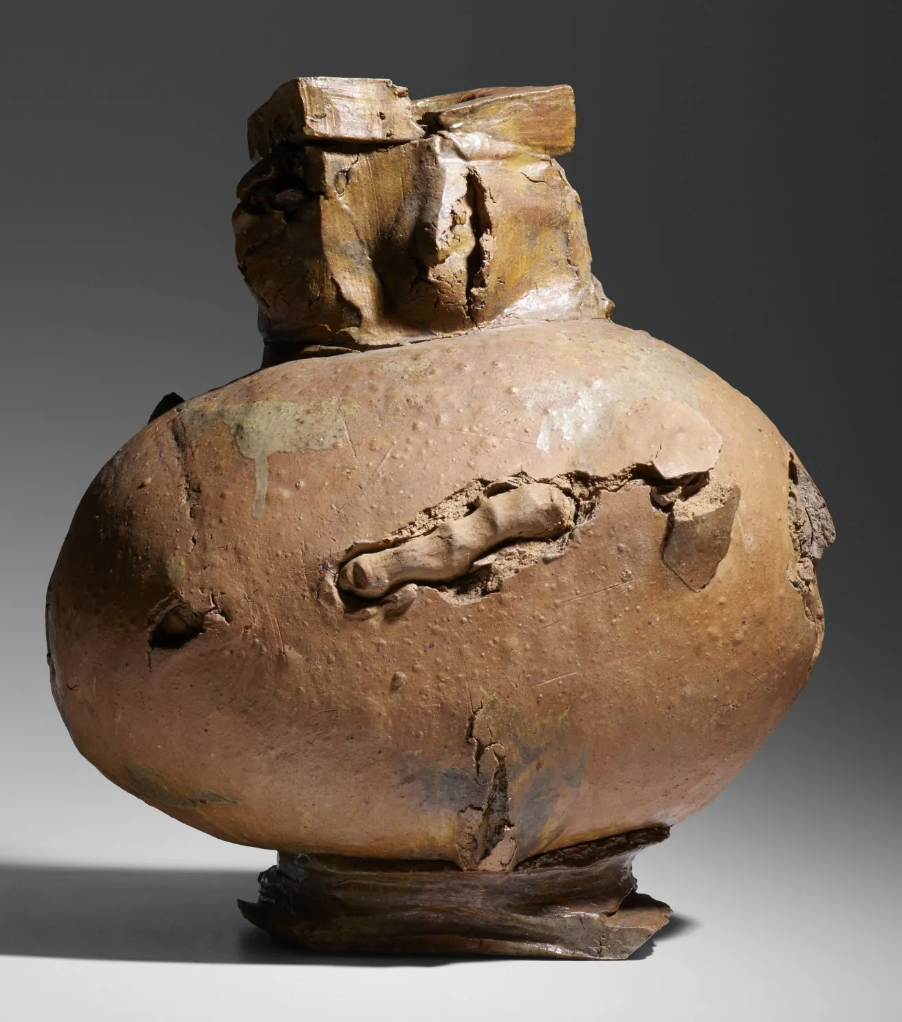
NEW YORK — Peter Voulkos was not just an innovator but a rock star in the field of ceramics. Wildly abstract forms are now the norm in the artistic medium, but someone had to show the way, and Voulkos was that trailblazer. He revolutionized the field in the 1950s, pushing ceramics past its humble functional roles and reimagining them as unusual and monolithic sculptures.
Through his innovative style that married painting and sculptural techniques, Voulkos created radical pieces that were ahead of their time. The artist was renowned for his energetic and innovative clay-working techniques, including pushing, pulling and gouging. He was also recognized for his attention to surface design with applied cutouts, glaze work, painted brushstrokes and even casting some of his works in bronze.
Born Panagiotis Harry Voulkos (American, 1924–2002), the artist rode the wave of Abstract Expressionism that swept the fine art world in the mid-20th century. His non-utilitarian ceramics vessels bridged the class division between ceramic craft and fine art, and he prized aesthetics above function. In establishing the ceramics department at the University of California at Berkeley, he is said to have instructed a group of students to make a teapot with the caveat that it be non-functional.
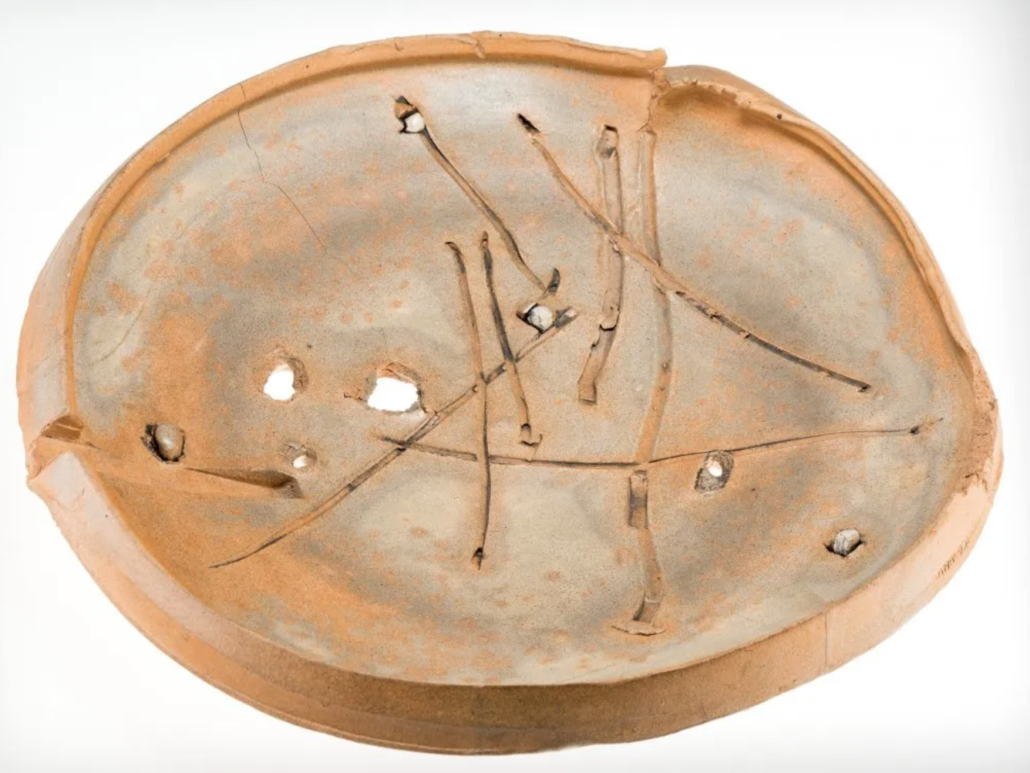
An example of a Voulkos work that flouts its alleged purpose is a pierced plate that brought $4,200 in October 2017 at Heritage Auctions. It clearly transcends its form to become more of an artistic statement than a utilitarian object. While his sculptural vessels are better known and bring the highest prices, Voulkos returned to the platter form throughout his career, and his monumental chargers remain desirable. Examples range from simpler renditions that are gouged and marked to rarer ones that are also painted.
The ceramicist worked prolifically during the course of half a century, producing sculptural ceramics in the 1950s and 60s; blackware pieces in the 1960s; bronze sculptures in the 1960s and 1970s; gas-fired vessels in the 1970s and wood-fired pieces from 1979 to 2001. The latter was influenced by the Japanese tradition of wood-firing ceramics.
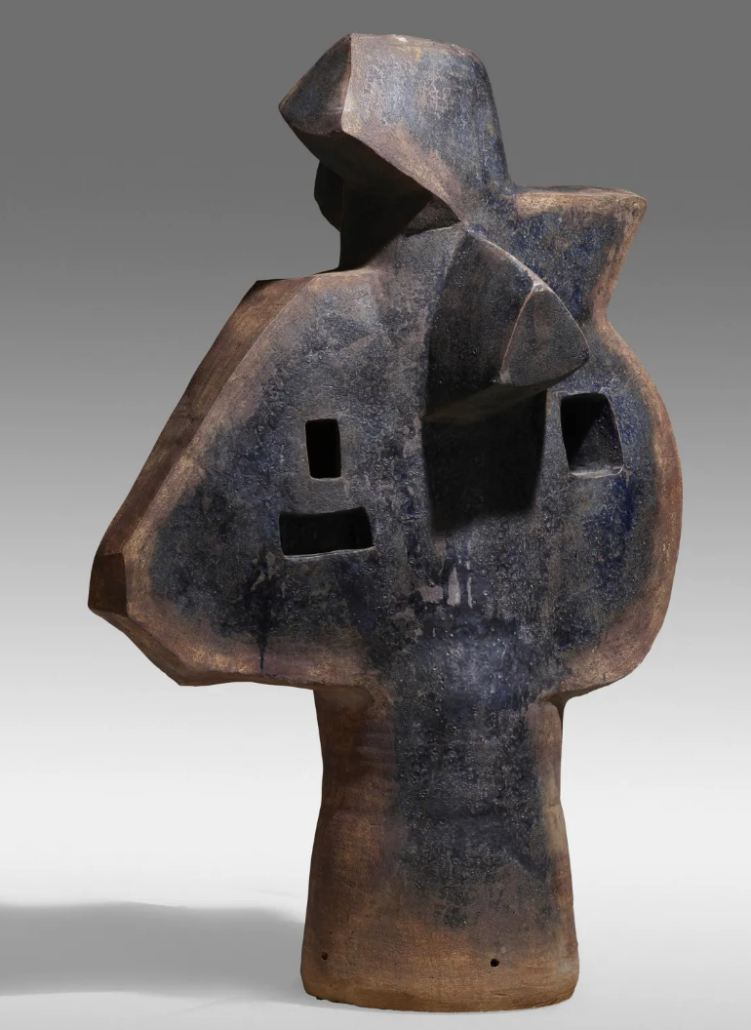
He was perhaps best known for the three-tiered sculptural works dubbed “stack pots,” among them an untitled 65in Stack piece from 1957 that sold for $320,000 plus the buyer’s premium in May 2021 at Rago Arts and Auction Center. Three years prior, Voulkos began making the distinctive stack pot form, which is widely credited as representing one of his most aggressive approaches to clay-handling. After tearing, pounding and gouging the clay, he assembled and threw several forms together and finished them with areas of painted glaze.
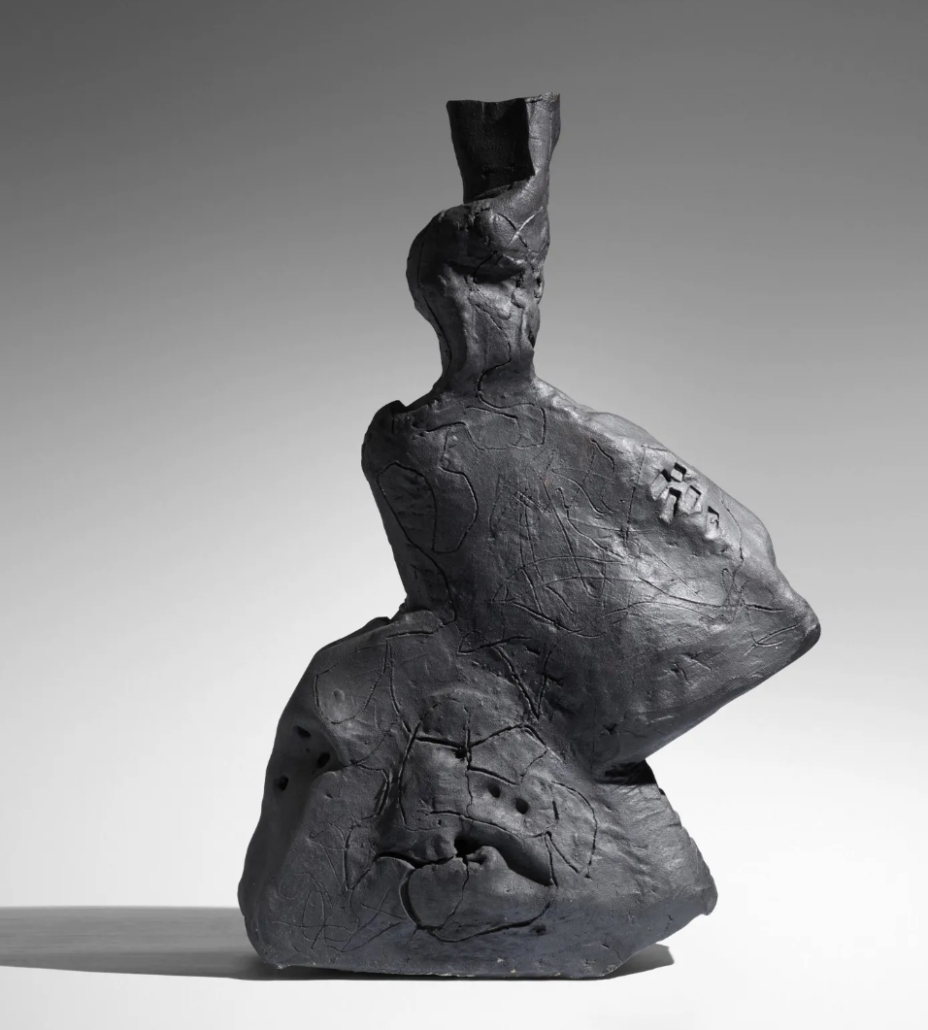
This Peter Voulkos ‘Snake River’ vessel realized $200,000 plus the buyer’s premium in November 2019 at Rago Arts and Auction Center. Image courtesy of Rago Arts and Auction Center and LiveAuctioneers.
Foreshadowing the blackware vessels that dominated his work in the 1970s is the 1959 vessel Snake River. Featuring iron slip and extensive mark-making and sgraffito decoration, the piece realized $200,000 plus the buyer’s premium in November 2019 at Rago Arts and Auction Center. Its deep metallic surface ably shows the artist’s understanding of — and sensitivity to — the raw materials to create sculptures that are powerful yet imbued with restraint.
Voulkos’ sculptures are celebrated for their unique free-form look as well as their physicality. A heavily-gouged untitled vessel from 1968 that brought $60,000 in June 2020 at Wright might be one of the closest things he made to a functional vessel. It resembles a pitcher, but its surface is riddled with cracks that look as if they were made by an unseen energy pushing out from within. It’s almost as if it is an egg being attacked and deformed by a hatching baby bird that is fighting to emerge into life.
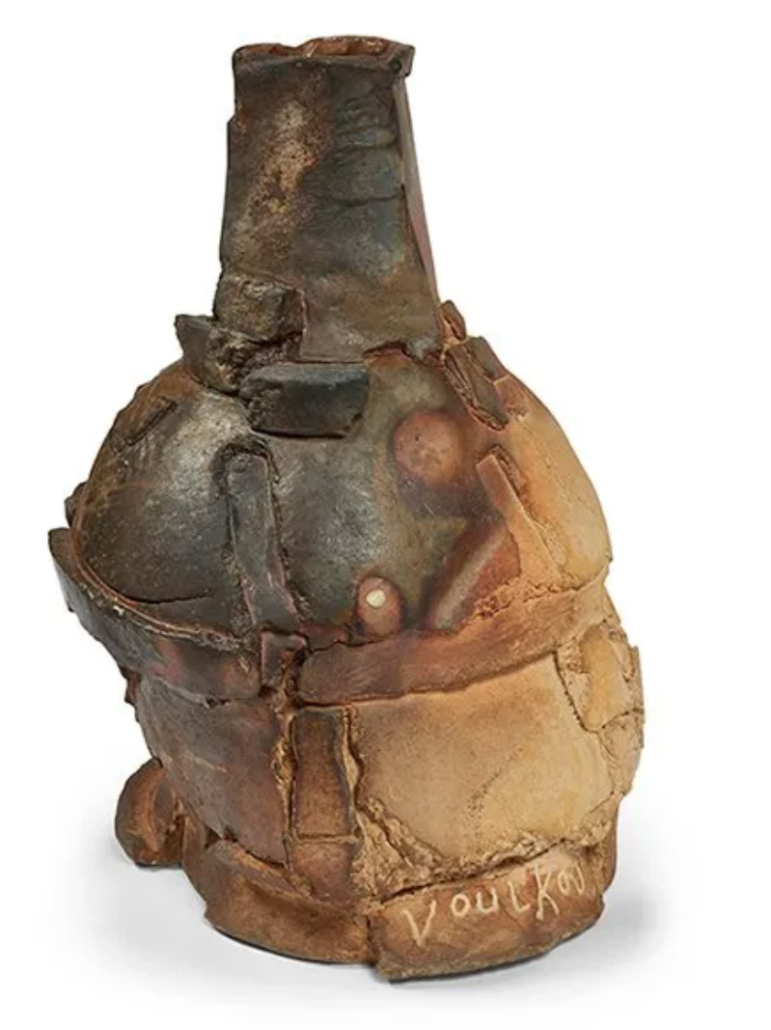
‘Big Ed,’ a 1994 Peter Voulkos vessel, achieved $55,000 plus the buyer’s premium in November 2016 at Treadway Toomey Auctions. Image courtesy of Treadway Toomey Auctions and LiveAuctioneers.
The evolution in Voulkos’ oeuvre can be seen when comparing that piece to a 1994 vessel, Big Ed, which achieved $55,000 plus the buyer’s premium in November 2016 at Treadway Toomey Auctions. Similar in form to the untitled 1968 gouged vessel, Big Ed demonstrates the effects of the wood-firing technique that Voulkos was using almost exclusively at the time. The wood ash gives the surface texture in the so-called “chance effects” style that the artist favored. Subverting the raw clay and traditional forms, Voulkos was no longer content to imbue the surface with scratch marks. Instead, he physically broke up the surface and put it back together again. These forms, known as “pot assemblages,” are highly sought after.
Abstract ceramics, with their unusual forms, slashed surfaces and sculptural complexity, are so well-established that it’s easy to believe they were always an accepted, even dominant form of the potter’s art. Without visionaries such as Peter Voulkos, modern ceramics might be far more dull and limited. His work proves that ceramics is a forgiving medium as much as a fragile one, and its fundamental ability to forgive lends it to endless experimentation.



